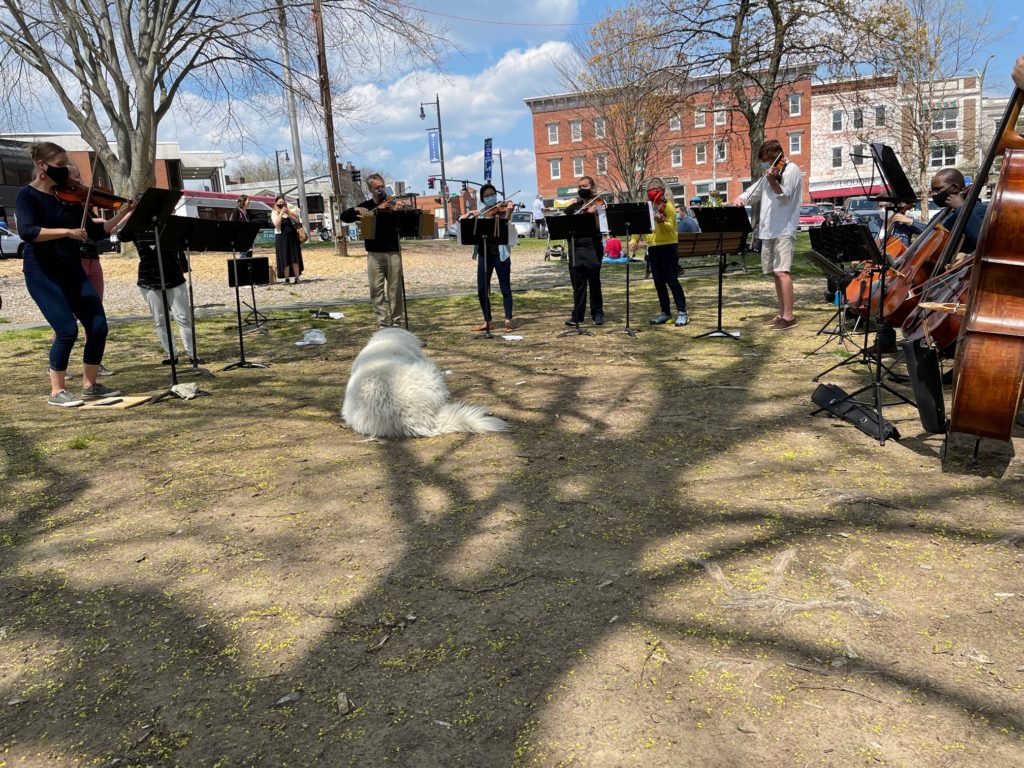Bach On The Common

Bach on The Common. April 24, 2021. Photo: Michael Greenebaum
What a joy to write about joy! On a recent beautiful Saturday afternoon on the Amherst Common, area musicians from pros to young students presented two hours of Bach masterpieces. Everything contributed to the joy–even an intrusive motorcycle and a huge music-loving white dog the size of a polar bear.
“Masterpiece” is an easy word to throw around but in this instance it is correct. The concert opened with an impeccable and dramatic performance of the Chaconne for solo violin, an incredible journey, sometimes serene sometimes terrifying always majestic. In form it is a theme and variations, but that hardly accounts for the dramatic sweep of this music, the breathtaking moment at which the D minor key turns into D major, or the always-uncanny counterpoint which requires that the violinist play duets with herself. In this instance it was a summons, and a sizable audience answered its call. Seeing a solo artist scaling one of the supreme peaks of Western music in a space called the Common truly inspired awe.
The music that ensued rose to the challenge of following the Chaconne, especially a performance of the Double Concerto for two violins and the Brandenburg Concerto No. 3 for strings. In these instances many of the performers transformed themselves into an orchestra accompanying the soloists. No conductor was necessary; these accomplished musicians felt the pulse of the music and played as one. If I especially mention the solid base provided by the cellos and double bass it is only because their sonority rang out as a dependable, true foundation.
But to not mention the interspersed movements from Bach’s Cello Suites – not always played on the cello – would be unjust, as would neglect of the three movements of the Concerto in A minor performed by three different violinists. One of the lovely touches of this concert was including young students whose Bach performances came from the ubiquitous Suzuki Method. Their intonation was true and their style was as assured as their more experienced colleagues.
I have not mentioned the names of the musicians, and that is not an oversight. With a few exceptions I did not know their names. They were introduced by first name, and of course they were masked; anonymity was the order of the day. Individuality resided in the performances, not the performers. The commonality between accomplished professional and young student was enhanced by their anonymity. The only name that counted that afternoon was Johann Sebastian Bach.
The Western performing tradition begins with masks and continues with our mythic superheroes. Why the masks? The iconic question “who is that masked man?” does not really expect an answer. One of the few gifts of this pandemic is the gift of anonymity. Last Saturday, anonymous artists shared space with anonymous young students and an anonymous appreciative audience. It was truly a Town Common.
